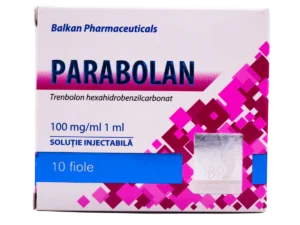Protein Symphony: Harmonizing Nutrition for Elite Body Sculpting
 In the pursuit of achieving a perfectly sculpted physique, nutrition plays a pivotal role. Elite body sculpting requires a well-balanced diet that provides the necessary fuel and building blocks for muscle growth and repair. Among the various macronutrients, protein stands out as a key player in this symphony of nutrition.
In the pursuit of achieving a perfectly sculpted physique, nutrition plays a pivotal role. Elite body sculpting requires a well-balanced diet that provides the necessary fuel and building blocks for muscle growth and repair. Among the various macronutrients, protein stands out as a key player in this symphony of nutrition.
Protein, often referred to as the “building blocks of life,” is composed of amino acids that are essential for muscle development and maintenance. It is not only crucial for bodybuilders and athletes but also for individuals looking to enhance their overall fitness and physique. The strategic incorporation of protein in one’s diet can significantly impact the results of their body sculpting efforts.
This article aims to delve into the world of protein and its harmonious relationship with elite body sculpting. We will explore the various benefits of protein, its role in muscle growth, and the optimal intake for achieving desired results. Additionally, we will discuss the importance of timing and quality sources of protein to maximize its effectiveness.
Understanding the science behind protein metabolism and its impact on body composition is essential for anyone striving to reach their body sculpting goals. By carefully crafting a nutrition plan that focuses on protein intake, individuals can optimize their muscle-building potential and achieve the physique they desire.
Join us on this journey as we unravel the secrets of protein symphony and discover the key to harmonizing nutrition for elite body sculpting. Let’s explore the science, debunk myths, and provide practical recommendations that will empower individuals to make informed dietary choices and unlock their full potential in the pursuit of their body sculpting dreams.
Stay tuned for the upcoming sections where we will dive deeper into the main text, covering various aspects of protein’s role in body sculpting, and conclude with practical recommendations that can be easily implemented into one’s daily routine.
The Role of Protein in Elite Body Sculpting
Building Blocks of Muscle
Protein serves as the fundamental building block for muscle growth and repair. When we engage in intense physical activities, such as weightlifting or high-intensity interval training, our muscles undergo micro-tears. Protein plays a vital role in repairing these tears and promoting muscle hypertrophy, leading to increased strength and definition.
Enhanced Muscle Protein Synthesis
Consuming adequate protein stimulates muscle protein synthesis, the process by which new muscle proteins are formed. This anabolic process is crucial for muscle growth and adaptation. By providing the necessary amino acids, protein intake triggers an increase in muscle protein synthesis, allowing for the repair and growth of muscle tissue.
Optimal Protein Intake
Determining the optimal protein intake for elite body sculpting can be a complex task. The general recommendation for individuals engaged in resistance training is to consume 0.8 to 1 gram of protein per pound of body weight. However, for those pursuing elite body sculpting goals, a higher protein intake may be necessary.
Research suggests that a protein intake of 1.2 to 2 grams per pound of body weight may be more beneficial for maximizing muscle protein synthesis and supporting muscle recovery. It is important to note that individual variations and specific training goals should be considered when determining the ideal protein intake.
Timing and Distribution
While total protein intake is crucial, the timing and distribution of protein consumption throughout the day also play a significant role in optimizing muscle growth. Studies indicate that consuming protein-rich meals or snacks every 3-4 hours can help maintain a positive muscle protein balance.
Additionally, consuming protein before and after workouts can enhance muscle protein synthesis and aid in muscle recovery. Pre-workout protein provides amino acids for immediate use during exercise, while post-workout protein intake aids in muscle repair and growth.
Quality Sources of Protein
Not all protein sources are created equal. When aiming for elite body sculpting, it is important to prioritize high-quality protein sources. These include lean meats, poultry, fish, eggs, dairy products, and plant-based sources such as legumes, tofu, and quinoa.
These protein sources provide a complete amino acid profile, containing all the essential amino acids required for muscle growth and repair. Additionally, they are often lower in saturated fats and higher in other beneficial nutrients, making them ideal choices for supporting body sculpting goals.
Conclusions
In conclusion, protein plays a vital role in elite body sculpting. It serves as the building blocks of muscle, stimulates muscle protein synthesis, and supports muscle recovery and growth. To optimize results, individuals should aim for an optimal protein intake tailored to their specific goals and consider the timing and distribution of protein consumption throughout the day.
Choosing high-quality protein sources is also crucial for achieving desired body sculpting outcomes. By understanding the science behind protein metabolism and implementing practical dietary strategies, individuals can harmonize their nutrition and unlock their full potential in the pursuit of elite body sculpting.
Practical Recommendations for Elite Body Sculpting
1. Set Protein Intake Goals
To optimize your body sculpting efforts, determine your protein intake goals based on your body weight, training intensity, and goals. Aim for a protein intake of 1.2 to 2 grams per pound of body weight to support muscle growth and recovery.
2. Prioritize Lean Protein Sources
Choose lean protein sources to minimize unnecessary fats and maximize protein content. Opt for lean meats like chicken, turkey, and fish, as well as low-fat dairy products like Greek yogurt and cottage cheese. Plant-based options like lentils, chickpeas, and tofu are also excellent choices.
3. Distribute Protein Intake Throughout the Day
To maintain a positive muscle protein balance, consume protein-rich meals or snacks every 3-4 hours. This ensures a steady supply of amino acids for muscle repair and growth. Plan your meals and snacks in advance, incorporating protein-rich foods into each.
4. Time Protein Consumption Around Workouts
Take advantage of the anabolic window by consuming protein before and after your workouts. Pre-workout protein provides fuel for exercise, while post-workout protein aids in muscle recovery and growth. Opt for fast-digesting protein sources like whey protein or easily digestible foods like eggs or a protein shake.
5. Consider Protein Supplements
If it’s challenging to meet your protein needs through whole foods alone, consider incorporating protein supplements into your routine. Protein powders, such as whey, casein, or plant-based options, can be convenient and effective in meeting your protein requirements.
6. Stay Hydrated
Proper hydration is crucial for optimal muscle function and recovery. Aim to drink enough water throughout the day, especially during and after workouts. Hydration supports nutrient absorption and helps transport amino acids to your muscles.
7. Monitor Progress and Adjust as Needed
Regularly assess your progress and make adjustments to your protein intake as needed. Keep track of your body composition changes, strength gains, and overall performance. If you’re not seeing the desired results, consider consulting with a nutritionist or dietitian to fine-tune your nutrition plan.
By implementing these practical recommendations, you can ensure that your protein intake is optimized for elite body sculpting. Remember, consistency and adherence to a well-balanced diet are key to achieving your desired physique. Embrace the protein symphony and let it guide you towards your body sculpting goals.








